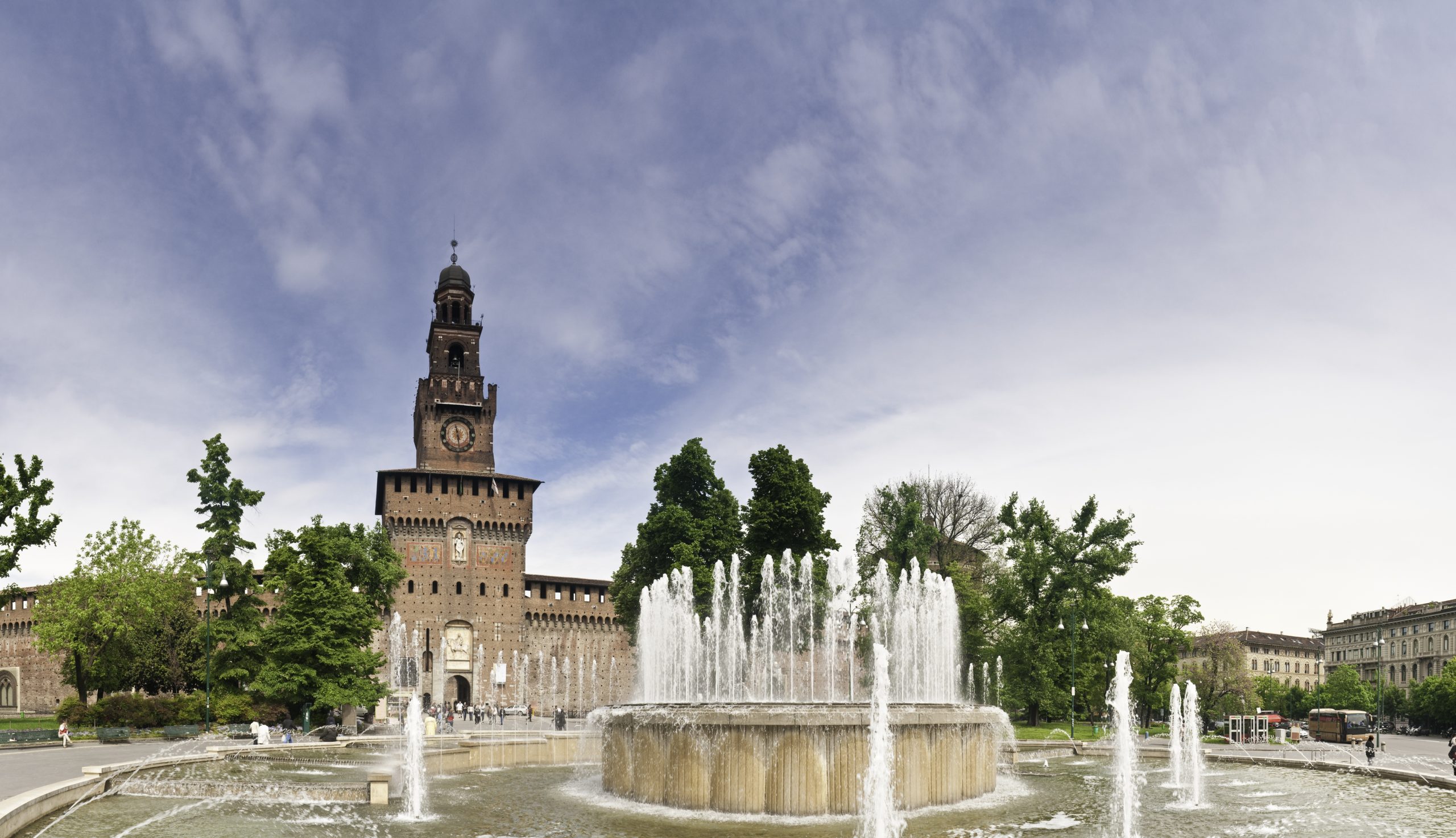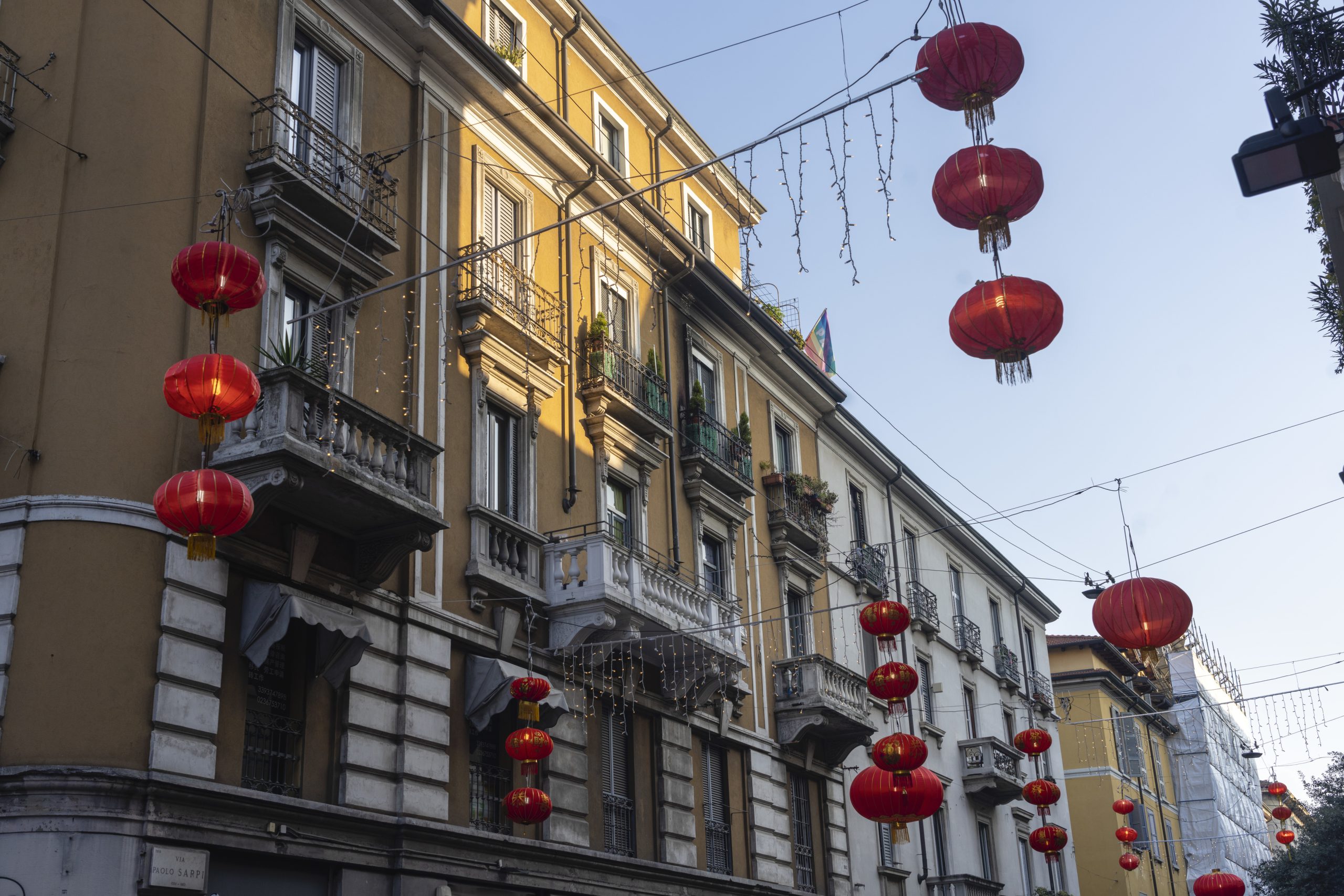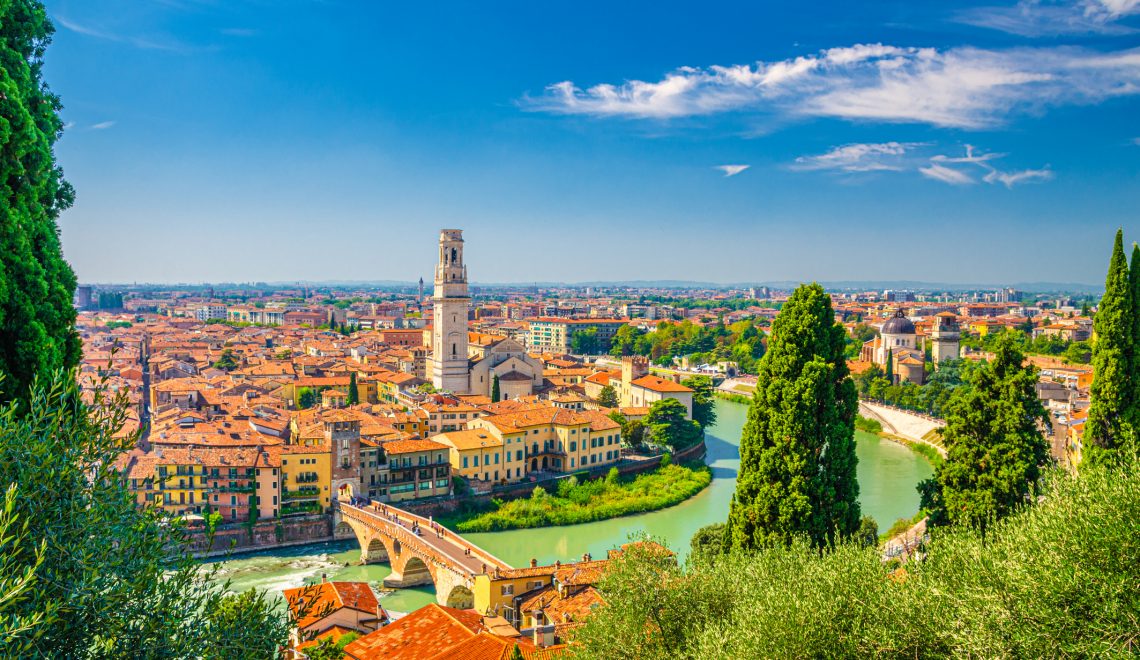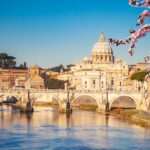
From the Duomo to the Castello Sforzesco, the Navigli, and the shopping streets: be sure to follow the Italo guide to the city of Milan.
Thinking of a weekend in Lombardy’s capital? This mini guide will show you what to see in just two days in the world’s fashion and shopping capital. Milan has so much to offer from a historical and artistic standpoint. It’s one of the most interesting destinations for all who want to spend even just two days of great fun and culture. Remember that you can also take a tour among Milan’s unusual and hidden places… many secrets, all waiting to be discovered!
What to see in Milan in two days: index
- Piazza del Duomo and Galleria Vittorio Emanuele
- Teatro alla Scala
- Castello Sforzesco and Parco Sempione
- Shopping in Via Montenapoleone
- The Navigli – Milan’s canal system
- Milan’s Monumental Cemetery
- Milan’s Chinatown
- Cenacolo Vinciano: Leonardo da Vinci’s Last Supper
- Basilica di Sant’Ambrogio
- The Platform 21 Holocaust Memorial: Binario 21
How to get to Milan and move around in the city
1st DAY IN MILAN
Start this two-day tour of Milan with a visit of the Duomo, its square and the famous Galleria Vittorio Emanuele. Previously, we had already given you some ideas about a weekend with friends, and the five things to do if you are under 30 – but in this two-day mini guide, we focus on the city’s essential cultural and artistic venues.
1. Piazza del Duomo and Galleria Vittorio Emanuele

Getting to Piazza del Duomo is very simple: from Milan’s beautiful Central Station, where you absolutely must have a look around, take the yellow metro line (M3) and get off at the Duomo stop. Exiting the metro, you find yourself in front of the magnificent Cathedral that dominates the entire square with its famous Madonnina. It is one of the largest and most amazing cathedrals in the world.
To enter the Baptistery and the Treasure Museum, you must buy a ticket. Once you have finished visiting the Church, go up to the Cathedral Terraces, they can be reached by stairs or an elevator – the magnificent view from the top will leave you speechless. Stairs are the cheapest and fastest choice, since there are long lines for the elevator.
Do try the five best brunch places in Milan.
Continue your tour in the adjacent Galleria Vittorio Emanuele, one of the most beautiful shopping areas in the world: a true indoor living room of the city among luxury boutiques, restaurants and cafés. You can also visit and climb the Terrace of the Rinascente department store for another beautiful view of the square! If you love seeing the city from above, don’t miss an apéritif with panoramic views of Milan’s terraces.
2. Teatro alla Scala

After your visit to the Galleria and having taken in the view from the Cathedral, continue the city tour and walk alongside the Cathedral. Your destination is Piazza della Scala, one of the Milan’s most lively areas. In this square stands the Teatro alla Scala, one of Italy’s most prestigious opera houses, with a sumptuous and lush interior.
It was built on the former site of the Church of Santa Maria alla Scala, from which it derives its name. The theater dates back to the 1700s and the building also served as a casino for a long time. It was severely damaged by bombing in 1943 during World War II, but it was rebuilt three years after the end of the war. Attend one of its shows and visit the interior by booking in advance for a guided tour that gives you access to the museum where you will find a large collection of paintings, sculptures, and costumes. If you are an Opera enthusiast, here is an overview of the most famous theaters in Italy where you can indulge yourself with these timeless operatic masterpieces.
3. Castello Sforzesco and Parco Sempione

Return to Piazza del Duomo and continue your city tour: a walk along Via Mercanti takes you to Piazza Mercanti, where you can admire the Palazzo della Regione.From the square, you then arrive in one of the most important streets of the city: Via Dante. You will find numerous shops, cafes, healthy lunches and where to eat the best Cotoletta Milanese, Milan’s signature beef cutlet. The street ends at the Castello Sforzesco, built as a fortress in 1368 and later transformed into the Ducal Palace.
After crossing the entrance, walk in the courtyards and choose whether to visit one of the seven Museums of the Castle (on the first Sunday of the month are even free!). The large internal central courtyard is an absolute must-see; it can be visited free of charge long with the Piazza Castello Fountain outside. If you are fascinated by the medieval period, here is our guide to the most beautiful villages of Lombardy and the guide to Italy’s unmissable ancient villages.
Next to the Castello Sforzesco, there is a vast green area, the Parco Sempione, which extends over 47 hectares. It is a park full of woodland, meadows and there is also a fantastic artificial lake home to several ducks. As soon as you enter the gate, you can see the great Arch of Peace and, once inside, you can proceed to see the statue of Napoleon III. The park was built between 1890 and 1893 according the English Garden style. It is an ideal place for a walk, for outdoor sports or for running every day, even while on a business trip. Stop for a short lunch break and then focus on Milan city center shopping and make plans for the evening.
4. Shopping in via Montenapoleone

The sales are on in Milan, so after this downtown lunch break, continue your tour with someshopping in the city’s main shopping areas known as the Fashion Quadrilateral! Here you will find luxury boutiques and the most prestigious shops. The most important streets are via Montenapoleone and via Spiga. These areas are easily reached by Metro: you just have to get off at the Cairoli stop.
I suggest, also, our guide to shopping in Milan where you can find the trendy stores and those of the most famous brands – you won’t regret it! If you are a serious fashion enthusiast and are planning a trip during Fashion Week, don’t miss a visit to the fashion museums in Milan. If, on the other hand, you love art and mystery, experience the Hidden Milan in the city’s iconic Art Nouveau district and discover the intriguing features of the Quadrilateral of Silence.
5. The Navigli – Milan’s canal system

We have come to the end of this first day, and you are surely wondering what to do for your first Milan evening. Entertainment for all tastes abounds! From Via Montenapoleone, take Bus no. 94 or Tram no. 2 and in 15 minutes you will arrive at the Navigli, the beating heart of Milan’s nightlife. But exactly what are these waterways? Milan’s Navigli are a system of navigable canals that cross the Lombard capital and were once used to transport of goods.
Today, they are one of the best places to enjoy an apéritif in Milan. This quarter is brimming with bars, trendy clubs, small stores, modern buildings that alternate with Art Nouveau buildings, and street art in Milan with murals and graffiti on concrete walls. For a seafood dinner, I recommend this extensive selection of Japanese restaurants in Milan, where you will find authentic sushi and ramen.
2ND DAY IN MILAN
Start this second day of your visit to Milan with a somewhat unusual but very important first stop, and then visit other parts of the city, churches, and monuments of the highest artistic value and conclude it with a moment of historical and cultural reflection. But if you have a chance to return for more days, don’t miss a visit to Milan’s skyscrapers: the skyline of Italy’s primary business district, from Gae Aulenti to Tre Torri, a new face of the city created with futuristic ideas by the world’s best architects.
1. Milan’s Monumental Cemetery

Don’t be surprised by the first stop on this second day – it’s a mini-tour you won’t regret! Built in 1866, Milan’s Monumental Cemetery is more than a mere place of worship; it’s a very interesting place, one of the city’s most spectacular sites to visit. It is an artistic journey in a real open-air museum with extraordinary works of art.
It’s area extends over 250,000 square meters and contains a large number of Italian sculptures, Greek temples, obelisks and a scaled-down version of Trajan’s Column. Its tombs include those of illustrious figures such as Salvatore Quasimodo, Alda Merini, Dario Fo and artists such as Giorgio Gaber. You can reach the Monumental Cemetery with tram lines 7, 12 and 14, by bus no. 37 or by getting off at the Garibaldi metro stop.
2. Milan’s Chinatown

After the visit to the Monumental Cemetery, take a walk onwards to Milan’s Chinatown. The Chinatown that stretches between Moscova and the Monumental Cemetery has its hub in the famous Via Paolo Sarpi. It features Chinese entrepreneurial shops, and you’ll find the best Chinese restaurants in the city. If you visit it during the Chinese New Year celebrations, you will find the streets full of lanterns and parades with wagons and dragons. Discover the history and curiosities of Milan’s Chinatown, what to see and where to eat, and enjoy a unique experience.
3. Cenacolo Vinciano: Leonardo da Vinci’s Last Supper

After visiting Chinatown, continue your city tour by taking the metro subway from the Garibaldi stop to Cadorna railway station; it will only take a few minutes. A short distance from the metro exit, you reach the Church of Santa Maria delle Grazie where you will find Leonardo da Vinci’s Last Supper. This extraordinary work, painted between 1495 and 1497 by Leonardo da Vinci, is a huge painting 460 centimeters high and 880 centimeters wide; it was applied in a manner that was new in its time with respect to the fresco technique.
You can admire it on the wall of the ancient hall of the church’s Dominican Convent, where you can also take the Pinacoteca Ambrosiana art gallery tour.If you are passionate about art, a visit to the Biblioteca Ambrosiana in Milan, one of the most visited and important museums in Italy, is a compelling experience. To visit the most famous painting in the world, you must book well in advance at the telephone number +39 02 92 800 360. Visits last 15 minutes for a maximum of 30 people, and taking photos is forbidden.
4. The Basilica of Sant’Ambrogio

A few steps from the church of Santa Maria delle Grazie, we arrive at the fourth stop on day-two of our tour: the Basilica of Sant’Ambrogio. This church is most certainly worth visiting, both outside and inside. In the year 387, the basilica was consecrated to the saint after whom it is named and rebuilt in the 11th century in the Lombard Romanesque style.
Severely destroyed in World War II, it was rebuilt in its original appearance and is now one of the most beautiful churches in Milan. In the interior, you can visit the remains of St. Ambrose kept in a golden casket and the many artistic masterpieces. By tradition, the Patron Saint feast day is celebrated on 7 December, by linking with the following day’s festivity of the Immaculate Conception; this allows many of Milan’s citizens to leave the city for a welcome early winter break.
5. The Platform 21 Holocaust Memorial: Binario 21

To close this two-day break in Milan, it’s back to the Central Station again and, before your departure, experience a solemn moment in one of Milan’s museum sections: the Holocaust Memorial on Platform 21. This place is dedicated to the memory of Italy’s Holocaust victims. The entrance to the Memorial is 500 meters away at no. 1, Piazza Edmond J. Safra, just outside the Central Station. Binario 21 is the only European site involved in the deportations that still remains intact.
It is located on the floor beneath that of the current station platforms and used to serve the mail trains. During the Second World War, it was adapted as a terminal for the transport of Jews to concentration and extermination camps. Inside, in the atrium, the long wall bears the inscription indifference. You can visit two of the four original cattle cars of the time, the Wall of Names and the Hall of Testimonies. The admission costs €10.
How to get to Milan and move around the city
The most convenient way to get to Milan is by train! Take off with Italo and take advantage of its 79 daily connections to all corners of Italy; check Italo Treno’s timetables and tickets to Milan and find out how to get to Italy’s fashion capital. Also discover the car rental service offered by Italo in partnership with Hertz. For a future multi-day trip, also discover how to take four different day trips starting from Milan by train and what to visit near Milan: the most beautiful nearby locations.

Getting around Milan is very convenient thanks to the many buses, trolleybuses, and streetcars at the cost of €1.50, but the fastest way is the Metro Subway: I recommend you buy a day pass for €7; if you want a ticket valid for three consecutive days, the price is €12. Passes and tickets can be easily purchased at the machines at the entrance to each Metro station. If, instead, you want to be more independent, try the car rental service offered by Italo in partnership with Hertz.








